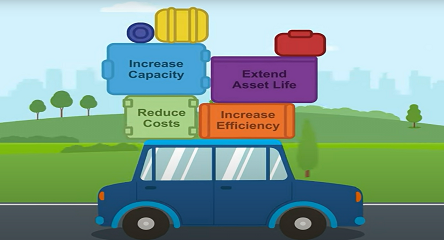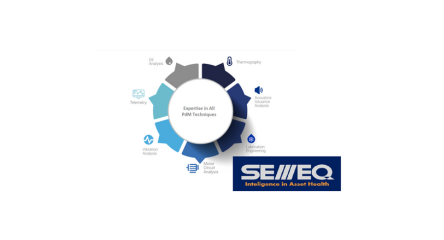Steps to Improving Data Integrity
A computerized maintenance management system (CMMS) or enterprise asset management (EAM) software is only as good as the data it contains. Human error accounts for much of the problem as it relates to inconsistencies in data, since employees are responsible for inputting data. Even if your facility utilizes condition monitoring sensors or other automated technology, there is still a human component of setting up data standards. Learn what steps you can take toward improving data integrity, which paves the way for successful CMMS/EAM utilization.
Gather Stakeholders
One of the most important factors that contributes to successful data standard adoption is buy-in from stakeholders. If all user groups are represented and given the opportunity to provide input throughout the naming process, they’re more likely to participate and enforce the data standards they helped develop. When identifying what stakeholders should be involved, consider management teams, system administrators and CMMS end users.
Establish ID Naming Conventions
The next step involves either coming up with new naming standards (if implementing CMMS for the first-time) or reviewing how asset IDs and parts are currently named. It’s best to streamline IDs by eliminating any redundant fields. For example, you may be able to shorten an asset ID that includes digits for building, line, type, etc., if other asset fields provides the same data. Try different naming schemas and review them with team members to see what makes sense for your facility. Whatever you decide on, it’s critically important that your CMMS naming conventions are consistent with the language and workflow of your facility. Your CMMS vendor can also provide recommendations that have worked well for customers in similar industries.
Share
Once everyone agrees on a naming schema, make sure the information is published and accessible to all stakeholders. In order to be successful, the naming criteria should be documented in maintenance standard operating procedures (SOPs) and reviewed by all relevant staff. Managers should also require all new CMMS users to complete training on SOPs, including the use of naming standards. General CMMS software training is also beneficial, as it helps users utilize their software to its fullest extent. Learning how to use software efficiently and becoming familiar with established naming conventions helps end users easily retrieve pertinent data when needed.
Enforce
Although there are numerous ways to make sure data gets entered properly, here are a few suggestions:
- Limit the number of users who can add or edit master information
- Consider managers, administrators and super-users
- Ensure all users receive proper training
- Limit editing rights in user and group permissions
- Add required fields in CMMS system views
Run Reports to Find Data Errors
To identify fields missing data or out-of-range conditions, create filters for completed work orders and purchase orders. Honing in on errors helps provide insight on the root cause of bad data. Soon thereafter, you should review and correct bad data. When completing work orders or purchase orders, check to make sure users returned all the information needed. In an effort to incorporate this process into your regular work routine, it’s best to create and schedule a planned data review of work orders and purchase orders.
Enhance Reporting and Data Compliance
You can also create daily, weekly or monthly reports that show data compliance such as missing fields, ad hoc data, etc. As data compliance improves, there will be fewer noncompliant work orders and purchase orders over time. Improving data integrity also enhances the value of reporting. Sufficient data enables more in-depth reporting, which can help organizations identify trends, spot weaknesses and improve operations.
Share the Benefits
There are countless benefits associated with improving data integrity, which you’ll want to make known to constituents. As you enjoy the opportunities created as a result of improved data validity, consider building and enhancing dashboards. Place large screens strategically throughout your facility to show off results and bask in the glory.
To view the original post at the links below:
https://www.dpsi.com/blog/resource-allocation-in-cmms/





